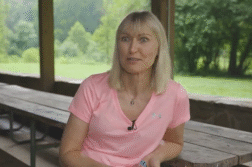CINCINNATI, Ohio (Ivanhoe Newswire) – With skyrocketing numbers of opioid overdoses and deaths, public health experts and communities nationwide have tried to develop programs to distribute naloxone – also known by the brand name Narcan – to reverse the effects of opioid overdose. Now, a novel program, according to the numbers, may be working to curb drug fatalities.
In 2020, 44 Americans died every day from a prescription opioid overdose – 16,000 in one year, 100,000 Americans died from illegal, or street opioids, like fentanyl, last year alone. Now, a new program is designed to provide help before drug fatalities.
Researchers at the University of Cincinnati paired with the non-profit group – Caracole – to provide supplies from what they call “harm reduction vending machines.”
Director of Prevention at Caracole, Suzanne Bachmeyer says, “Safer injection kits, injectable naloxone, and nasal naloxone …”
… Those – and more – all readily accessible in a secure machine that resembles a vending machine. People call a number to get a code to access supplies. Bachmeyer and UC researcher Daniel Arendt, PharmD, BCPS know to some, it may feel counterintuitive to provide free naloxone and fentanyl test strips to people struggling with addiction, but …
“We do not believe that providing supplies to keep people safe, to keep people from overdosing and to keep people from contracting infectious diseases, enables them in any way,” Bachmeyer reassures.
The vending machine has been operational for two years. More than one thousand people have used it and researchers say it’s contributing to a decrease in overdose deaths in Cincinnati and the surrounding area.
Arendt says, “It’s, again, important to recognize, nationwide, up 15%, preliminary for us, down 10%.”
Advocates say the harm reduction program – that keeps the supplies locked but within reach anonymously – may eliminate any fear of arrest or reprisals. Suzanne Bachmeyer says many other health organizations and community groups nationwide have contacted them to learn more about their program. A second vending machine is now in place in another Ohio county. They say the program is funded entirely by private grants and donations.
Contributors to this news report include: Cyndy McGrath, Producer; Kirk Manson, Videographer; Roque Correa, Editor.
To receive a free weekly e-mail on medical breakthroughs from Ivanhoe, sign up at: http://www.ivanhoe.com/ftk
Sources:
https://www.cdc.gov/opioids/data/index.html
https://www.nytimes.com/2023/02/15/health/narcan-nalaxone-drug-stores.html
https://www.cdc.gov/drugoverdose/deaths/prescription/maps.html
Centers for Disease Control and Prevention
Daniel Arendt, PharmD, BCPS, University of Cincinnati
Suzanne Bachmeyer, Director of Prevention, Caracole
MEDICAL BREAKTHROUGHS
RESEARCH SUMMARY
TOPIC: FIGHTING DRUG FATALITIES WITH A ONE-OF-A-KIND VENDING MACHINE
REPORT: MB #5200
BACKGROUND: Anyone who takes opioids is at risk of developing an addiction, but it’s impossible to predict who’s vulnerable to eventual dependence on and abuse of these drugs. Opioids are responsible for the majority of overdose deaths in the U.S. today. According to the U.S. Department of Health & Human Services, 10.1 million people misused prescription opioids and 1.6 million people had an opioid use disorder in 2019. In 2020, nearly 75% of drug overdose deaths involved an opioid.
https://www.hhs.gov/opioids/statistics/index.html)
DIAGNOSING: Opioid use disorder is characterized by symptoms such as physical dependence, cravings, drowsiness, changes in sleep habits, weight loss, frequent flu-like symptoms, lack of hygiene, and/or stealing from family or friends. Even when suffering from a substance use disorder, a person may deny that the problem is serious and resist efforts to help for a long time, but when ready and willing to start a recovery process, it is important for the person to have access to resources and to start treatment as quickly as possible.
(Source: https://www.hopkinsmedicine.org/health/conditions-and-diseases/opioid-use-disorder)
NEW TECHNOLOGY: MetroHealth Medical Center is one of five Cleveland locations where a vending machine stocked with naloxone, the life-saving opioid overdose antidote, has been installed for public use. The vending machine also includes other items such as condoms, wound care kits and fentanyl test strip kits. “Harm reduction efforts, like public access to naloxone in vending machines and emergency access naloxone cabinets, save lives. The ADAMHS Board doesn’t condone drug use, but we want to make sure people are alive to get the help they need,” said Scott Osiecki, CEO of the ADAMHS Board. “It is important for the community to know that mental illness and addictions are biological brain disorders that require treatment. We want people to have that chance to get treatment, to live in recovery and that is why we continue to expand harm reduction tools.”
(Source: https://news.metrohealth.org/naloxone-vending-machine-outside-emergency-department-for-public-use/)
FOR MORE INFORMATION ON THIS REPORT, PLEASE CONTACT:
Tim Tedeschi
If this story or any other Ivanhoe story has impacted your life or prompted you or someone you know to seek or change treatments, please let us know by contacting Marjorie Bekaert Thomas at mthomas@ivanhoe.com




